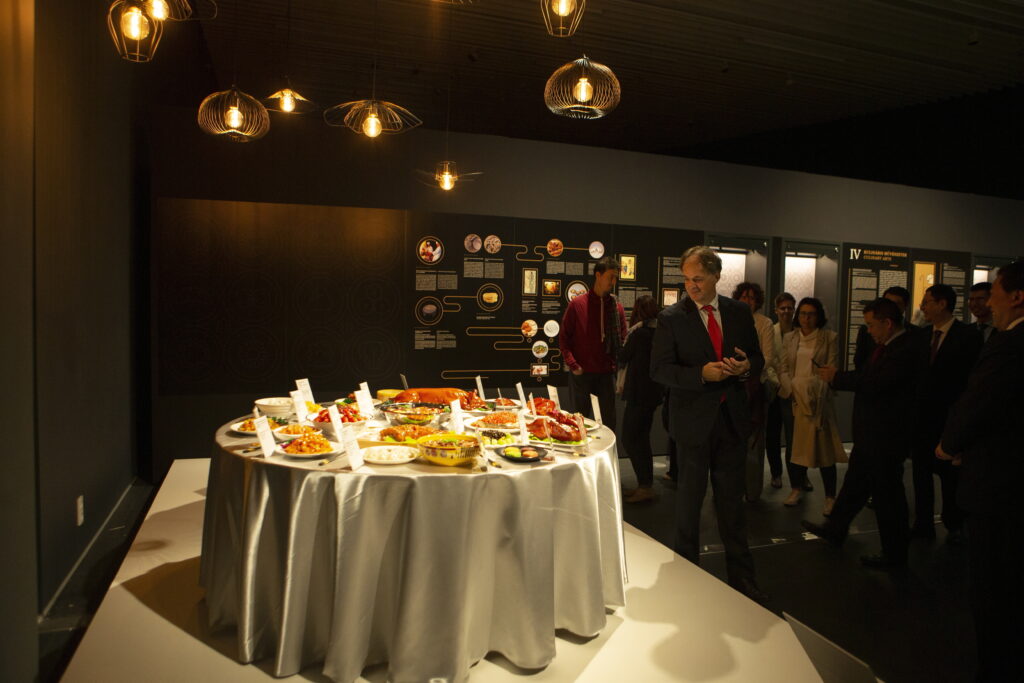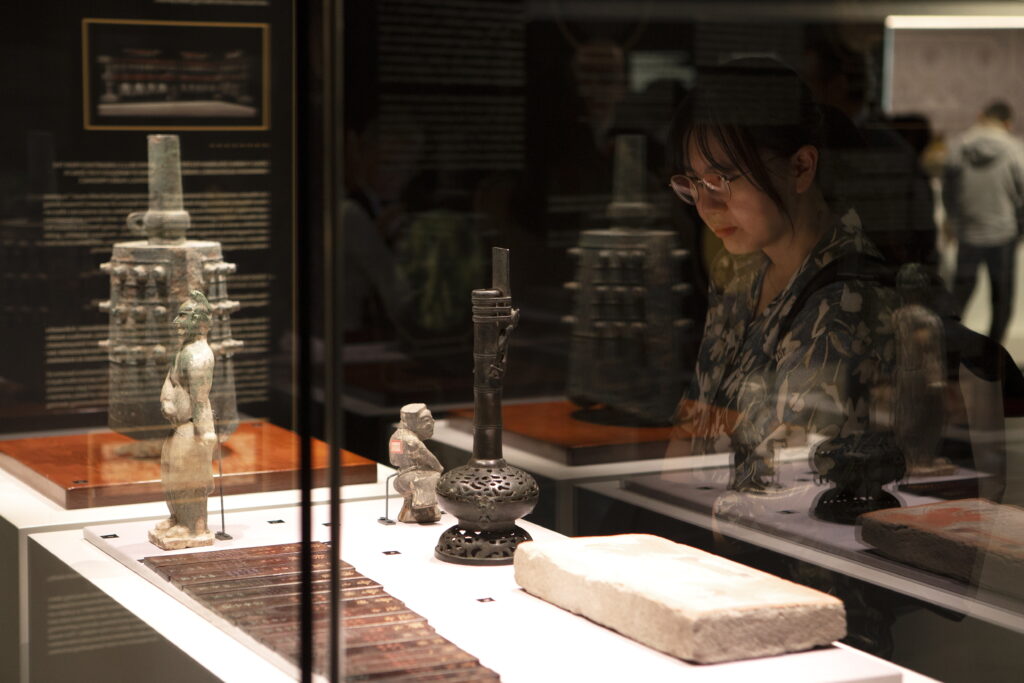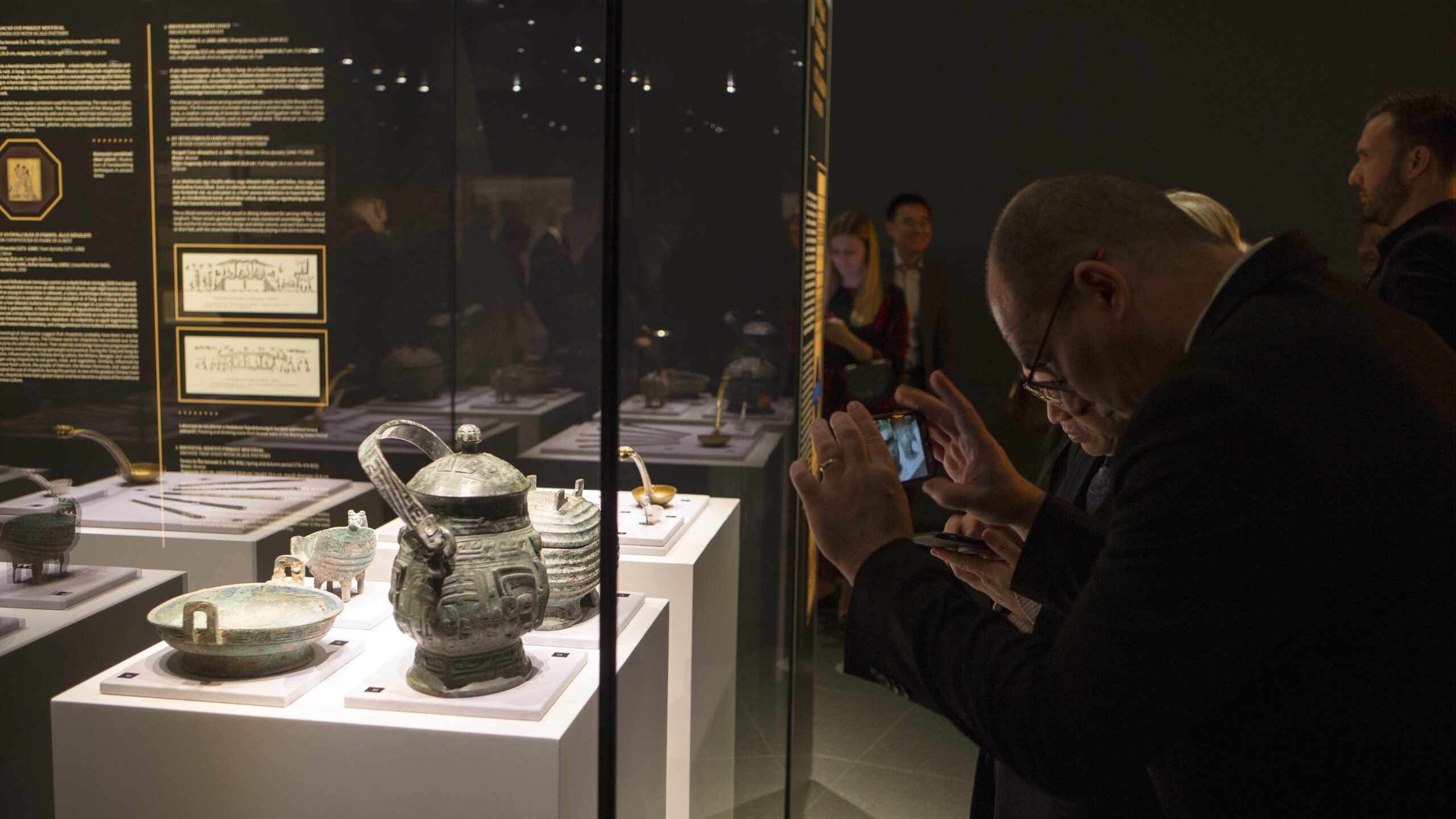A new exhibition titled Fine Dining: Food Stories of Ancient China opened on Tuesday at the Museum of Ethnography in Budapest, showcasing approximately 90 artefacts from the National Museum of China’s collection, spanning from ancient times to the modern era.
At the opening ceremony Deputy State Secretary for Cultural Diplomacy at the Ministry of Culture and Innovation Gábor Csaba highlighted the significance of this occasion for Sino–Hungarian cultural relations. He noted that the grand exhibition, which explores 5000 years of Chinese gastronomy and its associated material culture, is being held at one of Europe’s richest institutions in ethnographic and folk art collections. He emphasized that the exhibition, born out of collaboration between museums, exemplifies how cultural exchange can contribute to strengthening mutual respect and understanding between countries and peoples of different cultures. He also pointed out that the exhibition, through its rich collection of artefacts, images, and texts, offers insight into the linguistic, philosophical, and spiritual aspects of Chinese gastronomy. He added that the exhibit highlights how our current era is deeply rooted in cultural traditions, ancient experiences, and wisdom. Furthermore, he stressed that the guiding principles of the civilizational dialogue and cultural exchange between Hungary and China—mutual understanding and acceptance—have remained unchanged for 75 years. Hungary is committed to further strengthening its cultural cooperation with China in the future and hopes to organize many more exhibitions of similar spirit and calibre in both countries.

China’s ambassador to Hungary Gong Tao remarked that 2024 marks a significant year in Sino–Hungarian relations, as it celebrates the 75th anniversary of diplomatic ties and Chinese–Hungarian friendship. Building on this foundation, he expressed a desire to deepen mutual understanding, expand the relationship further, and tap into more opportunities for collaboration. He reiterated Hungary’s commitment to enhancing cultural cooperation with China and to hosting similar exhibitions in each other’s countries in the future. Tao added that the exhibition, an outcome of a May visit, further strengthens Sino–Hungarian relations. It presents artefacts, ranging from ancient to modern times, that illustrate Chinese dining culture, offering a glimpse into everyday life in the country. He noted that Chinese cuisine is also beloved by Hungarians, with numerous Chinese restaurants seen across Budapest. The exhibition will, he said, continue to reinforce cultural and gastronomic cooperation and strengthen the friendship between the two peoples. As mentioned during the opening, the exhibition had previously toured Liechtenstein, Paris, and Hong Kong, and will be open in its current venue until 19 January 2025.
Deputy Director of the National Museum of China Yang Fan and Director General of the Museum of Ethnography Lajos Kemecsi spoke about the creation of the exhibition and the collaboration between the two institutions.

Kemecsi noted that the exhibition is a highlight of the complex cooperation between the Museum of Ethnography and its Chinese counterparts. He emphasized that, for the Chinese, food and meals hold special significance, not only as necessities for survival but also as a means of overcoming difficulties in human relationships and fostering intimate connections. Food has also inspired various artistic expressions, including music, dance, painting, sculpture, and poetry in China. Through the artefacts on display, visitors can experience the unique charm and knowledge of Chinese dining culture.
Yang Fan also commented on how the exhibition provides visitors with a glimpse into a culture where the preparation of food and drink is not just about consumption but also carries spiritual significance. He spoke about food as an art form rich in content and the philosophy it embodies. He expressed hope that the diverse charm of Chinese dining culture will captivate the Budapest audience.
Related articles:








